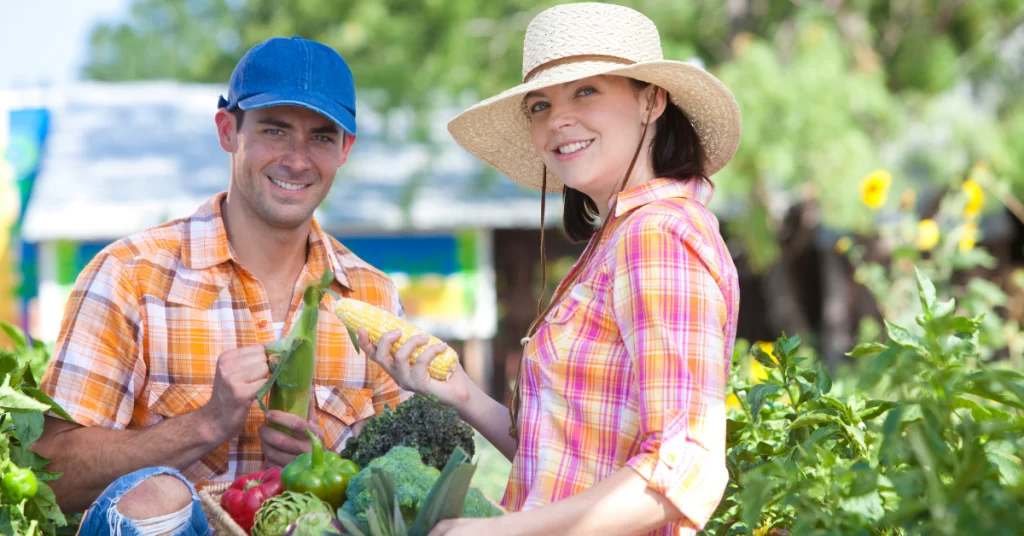Organic gardening tips are a sustainable and rewarding approach to growing plants without relying on synthetic chemicals. By focusing on natural methods, you can cultivate healthy, vibrant gardens while supporting the environment. This guide covers essential organic gardening tips, including fertilizer use, soil selection, and learning resources.
What is Organic Gardening?
Organic gardening is the practice of growing plants using natural methods and materials. It avoids synthetic pesticides, herbicides, and chemical fertilizers, focusing instead on improving soil health, encouraging biodiversity, and nurturing plants with organic inputs.
Key Principles of Organic Gardening:
- Build healthy soil through composting and natural amendments.
- Use organic fertilizers and natural pest control methods.
- Cultivate a diverse range of plants to support ecological balance.
Choosing the Best Organic Gardening Soil
Soil is the foundation of any successful garden. In organic gardening, the focus is on enriching the soil naturally to create an ideal environment for plant growth.
Characteristics of Good Organic Gardening Soil:
- Rich in Nutrients: Healthy soil contains essential nutrients like nitrogen, phosphorus, and potassium.
- Well-Draining: Prevents waterlogging while retaining moisture.
- Teeming with Microorganisms: Promotes nutrient cycling and plant health.
Tips for Improving Soil Organically:
- Add compost regularly to enhance soil fertility.
- Use organic mulch to retain moisture and suppress weeds.
- Test your soil’s pH and nutrient levels to determine specific amendments needed.
Table: Organic Soil Amendments and Their Benefits
| Amendment | Benefit |
|---|---|
| Compost | Boosts organic matter and nutrients |
| Bone Meal | Provides phosphorus for root development |
| Blood Meal | Adds nitrogen for leafy growth |
| Wood Ash | Raises soil pH and adds potassium |
| Worm Castings | Improves nutrient availability |
Organic Gardening Plants: What to Grow?
Choosing the right plants is vital for a thriving organic garden. Opt for varieties well-suited to your region and resistant to common pests and diseases.
Recommended Organic Gardening Plants:
- Vegetables: Tomatoes, cucumbers, kale, lettuce, carrots.
- Fruits: Strawberries, blueberries, apples, grapes.
- Herbs: Basil, thyme, oregano, parsley, cilantro.
- Companion Plants: Marigolds and nasturtiums to deter pests naturally.
How Often to Use Organic Fertilizer?
Organic fertilizers nourish plants slowly over time, unlike synthetic options that provide an immediate boost.
General Guidelines:
- Vegetables: Apply organic fertilizer every 4-6 weeks during the growing season.
- Flowering Plants: Fertilize every 6-8 weeks.
- Fruits and Trees: Use fertilizer at the start of the growing season and again mid-season.
Common Types of Organic Fertilizers:
- Compost Tea: Ideal for regular soil drenching.
- Fish Emulsion: Great for vegetables and leafy greens.
- Manure: Apply aged manure before planting.
How Often to Fertilize a Vegetable Garden?
For vegetable gardens, the frequency of fertilization depends on the plant type and growth stage.
Fertilization Schedule:
- At Planting: Use compost or a balanced organic fertilizer.
- During Growth: Apply fertilizer every 3-4 weeks for heavy feeders like tomatoes or peppers.
- After Harvest: Replenish the soil with compost or manure.
Where to Learn Organic Farming?
Learning organic farming practices can significantly enhance your gardening skills and knowledge.
Top Resources for Learning Organic Farming:
YouTube Channels:
- Follow channels like “Epic Gardening” and “GrowVeg” for step-by-step tutorials and tips.
- Watch expert gardeners demonstrate organic practices in real-time, making it easy to replicate their techniques.
Local Community Groups:
- Join community-supported agriculture (CSA) programs or gardening clubs to connect with like-minded individuals and learn practical techniques.
- Participate in local workshops and garden tours to gain hands-on experience and inspiration for your organic farming endeavors.
Books:
- “The Organic Gardener’s Handbook of Natural Pest and Disease Control” by Fern Bradley.
- “Teaming with Microbes” by Jeff Lowenfels and Wayne Lewis. These books offer detailed insights into organic gardening techniques and soil health management.
Online Courses:
- Explore MOOC platforms like Coursera and Udemy for comprehensive courses on organic farming.
- Look for specialized classes offered by organizations such as the Rodale Institute or Local Extension Offices, which provide expert knowledge and resources.
Pest Management
- Use natural deterrents like neem oil or insecticidal soap to protect plants from harmful pests without introducing chemicals. These natural options are effective and safe for the environment, ensuring a balanced ecosystem in your garden.
- Encourage beneficial insects such as ladybugs, bees, and lacewings. These insects act as natural predators to common garden pests like aphids and caterpillars, reducing the need for artificial pest control methods.
- Introduce companion planting by growing pest-repellent plants like marigolds, basil, or garlic near your vegetables to deter harmful insects naturally.
Watering Techniques
- Water deeply but less frequently to encourage plants to develop deep, resilient root systems. This practice not only conserves water but also helps plants become more drought-tolerant.
- Use drip irrigation or soaker hoses to minimize water waste and ensure plants receive water directly at the root zone. This method reduces evaporation and helps maintain consistent soil moisture levels.
- Mulch around plants to retain soil moisture, regulate soil temperature, and reduce weed growth. Organic mulches like straw or wood chips can break down over time, enriching the soil.
Crop Rotation
- Rotate crops annually to prevent soil depletion and break the cycle of pests and diseases specific to certain plant families. For example, avoid planting tomatoes in the same spot year after year to prevent soil-borne diseases.
- Plan your crop rotation based on plant families. Group similar plants together (e.g., legumes, brassicas, and nightshades) and rotate them to maintain soil health.
- Incorporate cover crops like clover or rye during off-seasons to replenish soil nutrients, improve soil structure, and suppress weeds.
FAQs
Can I use kitchen scraps directly in my garden?
Yes, but it’s better to compost kitchen scraps first to prevent attracting pests and improve nutrient availability.
What’s the best time to start an organic garden?
Spring is ideal for most regions, but fall planting works well for some cool-weather crops like spinach or garlic.


